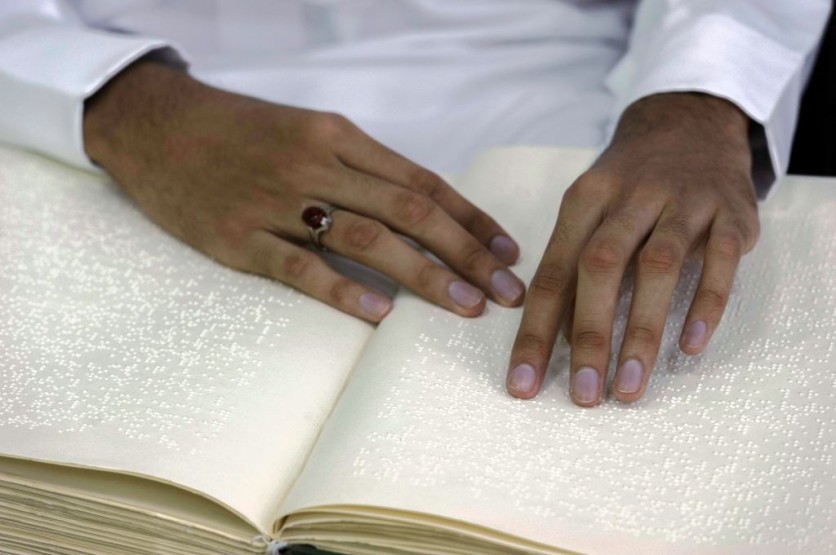An AI-driven robot demonstrates an exceptional ability to read Braille at a speed twice that of humans-reaching an impressive 315 words per minute. The researchers harnessed algorithms to enable the robot's camera to effectively deblur captured images.

A blind Saudi reads in braille a copy of the Koran, Islam's holy book, inside a mosque on the first day of the holy fasting month of Ramadan in the coastal town of Qatif, 400 kms east of Riyadh, on May 27, 2017.
Reading Braille Twice as Fast as Humans
Researchers at the University of Cambridge have developed an AI-powered robot capable of reading Braille at an impressive speed of 315 words per minute. Interesting Engineering reported that this doubles the average human reading speed.
The robot's accuracy is reported to be close to 90 percent. Unlike traditional robotic Braille readers that work statically, reading one letter at a time, this new robot uses a camera as a fingertip to read the text, providing a more dynamic and efficient reading process.
The researchers designed algorithms to enhance the camera's image processing, allowing the robot to accurately identify Braille letters and overcome challenges such as motion blur.
Recognizing the need for enhanced Braille reading capabilities, the team developed machine learning algorithms to empower the reader in rectifying images through the removal of simulated blur before engaging in letter recognition.
Making Sure of Speed, Accuracy
The introduction of artificial blurring to a set of clear Braille images facilitated algorithm training. Once adept at deblurring, the team employed a computer vision model to detect and categorize the Braille letters.
During testing, the researchers moved the reader along rows of Brailled characters, showcasing its remarkable ability to read at a speed of 315 words per minute-twice as fast as a proficient human Braille reader. The achieved text accuracy stood at an impressive 87 percent.
David Hardman, a doctoral student at the College of Engineering from Cambridge University, expressed his surprise at the high precision in Braille reading, especially considering the use of artificial blur for algorithm training.
He underscored that the team successfully identified a balanced trade-off between speed and accuracy, reflecting the capabilities seen in human readers.
The researchers have envisioned a future where this technology can be scaled to the size of a human hand for application on the skin. It's important to note that the primary goal of this research isn't solely to develop faster Braille readers.
Braille serves as an excellent testing ground for robotic 'fingertips' due to the precision required to distinguish letters placed close to each other. The remarkable aspect is that the researchers achieved this using an off-the-shelf sensor with exceptional accuracy.
EurekAlert reported that human fingertips, with their innate sensitivity, play a crucial role in helping us comprehend the world around us.
The sensory signals captured by our fingers enable us to determine the amount of force that can be applied to an object in our hand before it reaches its breaking point. Replicating these capabilities in robots has posed a significant engineering challenge.
Beyond softness, robotic hands need abundant sensor information to emulate human hand behavior. Striking a balance between softness and the required sensor information has proven difficult, especially when dealing with flexible or deformable surfaces.

ⓒ 2025 TECHTIMES.com All rights reserved. Do not reproduce without permission.




